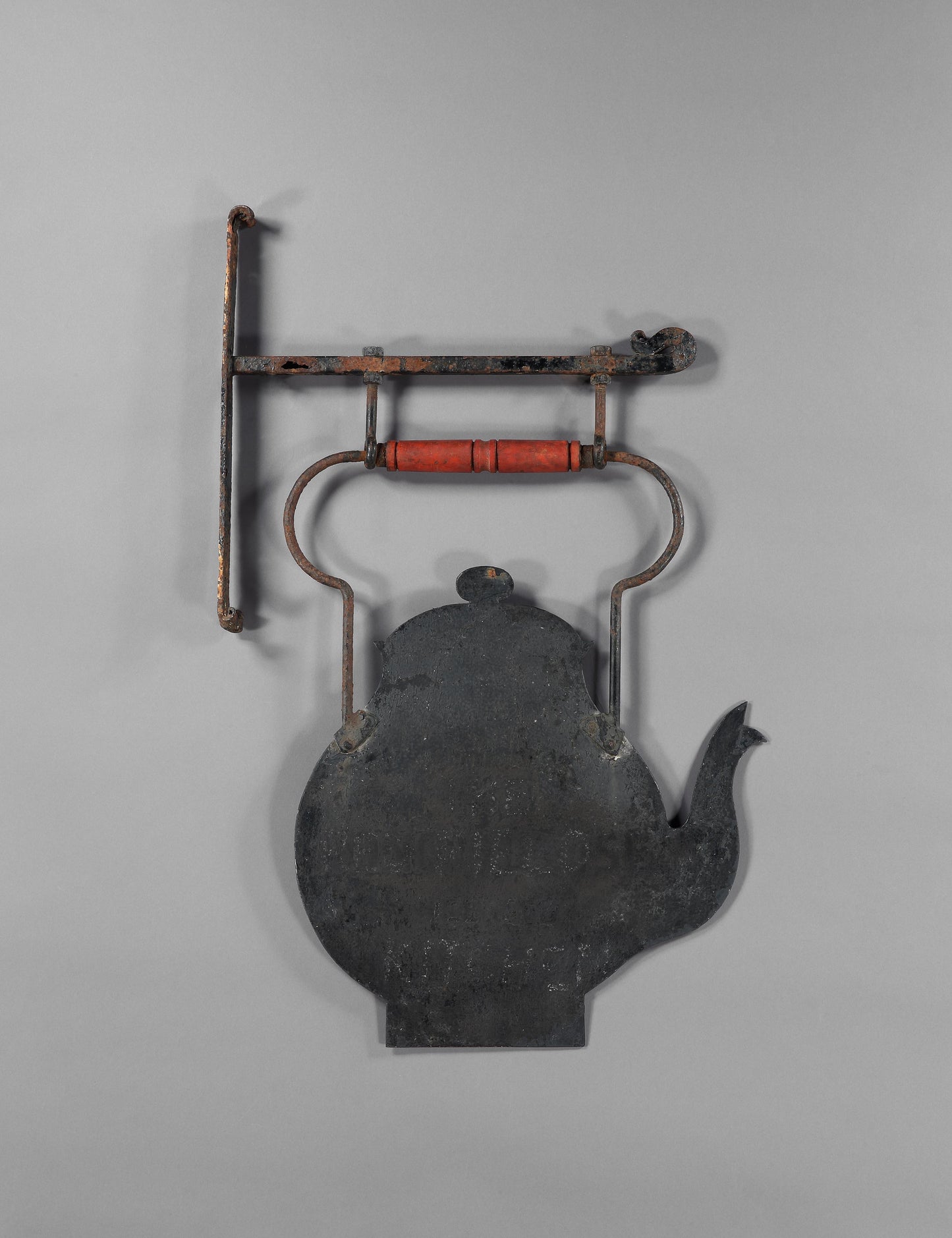Whimsical Folk Art Tea Shop or Tavern Trade Sign
Whimsical Folk Art Tea Shop or Tavern Trade Sign
Fashioned in the Silhouette Form of a Kettle
Weathered and Painted Sheet and Hand Wrought Metal
English, c.1900
37" high x 24" wide x 0.75" deep
Ref: 10738
In 1625 a Royal Charter proclaimed that Trade Signs would be permitted in London. Subsequently in April of 1710, a Mr Addison wrote in The Spectator ……”I would enjoin every shop to make use of a sign which bears some affinity to the wares in which it deals” and went on to say …. “Hence the Hand and Shears is justly appropriate to the Taylors and the Head and Pen to the Writing Masters”.
Tea Pots and Kettles were popular motifs and were used for several related but no specific trade purpose. In James Ayres, “British Folk Art”, Barrie and Jenkins 1977, Page 42 illustrates and discusses The Golden Teapot, sign of Robert Fox, Grocer and Tea Dealer of St Saviours Lane, Norwich; which was subsequently transferred to the grocery of John Dodson in Magdalen Street in the 1880s.
There is another large example held in the British Folk Art Collection at Compton Verney, (77.7cms high), and fashioned from painted and gilded papier mâché, which is inscribed “Finest Yu-Tsien Tea” “3/-“ (Shillings) and a large black Kettle form trade sign fashioned from metal. (76cms high), in the same collection.
The current example is created in silhouette from sheet and wrought iron and retains the original suspension bracket, together with the seemingly original, red painted, turned wooden handle. There is a “ghost” written inscription, just visible on both sides, which references “The Long House, Licenced”.
Of all British of institutions, the traditional “Tea Shoppe” is one of the most iconic, and originally developed out of the tradition of earlier coffee houses, taverns and pubs as the drinking of tea grew in popularity during the latter half of the C18th. So both Teapots and Kettles were popular motifs on the high streets of many English country towns and villages, as well as in London. Sadly few of the old signs survive, although you can occasionally be lucky enough to see early example still hanging in the spot they were originally made for. All of these figurative signs honour Mr Addison’s desire for signs to bear affinity to the wares the premises deals in. As we have learnt, this could be a Grocers Shop or Tea Merchant’s store as much as it could be Tea Rooms or other Licenced premises and even those who made and sold tea pots and kettles. Somehow, they are all intrinsic to British social history and the tea drinking tradition.
This example is of good scale and has a lovely strong silhouette with a generous curve to the spout and a particularly fine wrought handle, with the turned wood handle. Since most have been lost, destroyed or ruined by weather and decay, they are now hard to find and have an enduring and uniquely British appeal, representative of the core spirit of our folk art tradition, which is why they are cherished and held in most significant collections of British and European Folk Art.
Contact Us
Collections: All collections, Folk art


